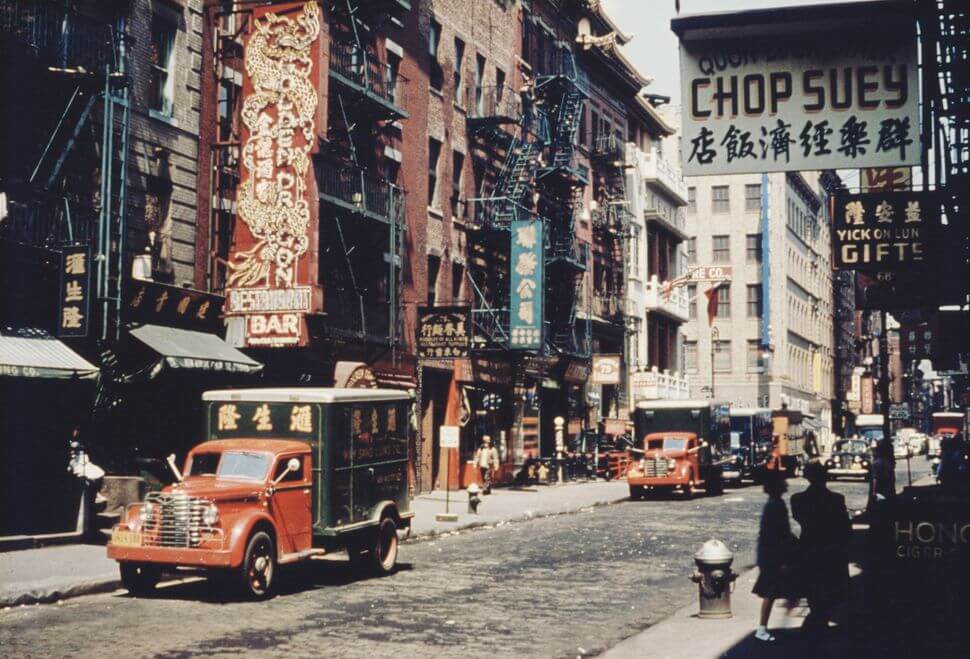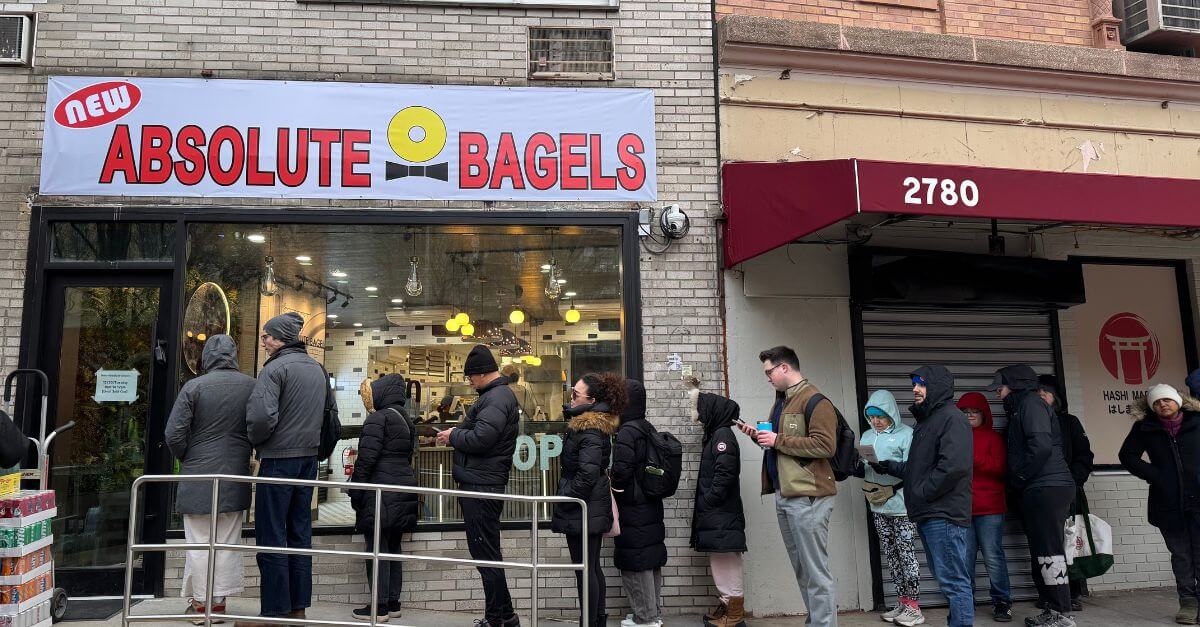Enough To Make Bugsy Siegel Blush
The Hebrew Hammer isn’t the only Jew in a frock coat and a black hat meting out justice this winter. In fact, next to the Weiss brothers, lieutenants in San Francisco’s turn-of-the-century Jewish mob, the Hammer looks like a bit of a nebbish.
The brothers are the heroes of “Market Street,” the first story arc in “Caper,” a new monthly series published by DC Comics. “Market Street” will wrap up in the February and March issues of “Caper” and will be followed by two more four-issue arcs, written by Judd Winick and drawn by different artists. Varied in tone and setting, the tales are loosely linked through family connections between characters, and revolve around double-crosses, heists and various criminal misadventures.
Don’t let the fact that “Caper” is a comic book fool you into thinking it would make an appropriate Chanukah present for your young nephew. The warning label — “Suggested for mature readers” — is perhaps too subtle. The comic’s violence is gritty and ornate: Jake and Izzy Weiss win their jobs as “toppers” by bludgeoning their father’s murderer to death with a two-by-four and a table leg. Later, Izzy accidentally pushes a debtor off a building and shows little remorse: “No big loss. He couldn’t pay. We would’ve had to top him next week anyway.” They swear like sailors, in English and Yiddish, and in the first issue we’re treated to an intimate glimpse of Jake mid-coitus. It’s enough to make Bugsy Siegel blush.
At the same time, the Weiss brothers travel in circles that are surprisingly frum. Everybody — including their victims and their godfather, “Boss” Josef Cohen — wears head coverings. When Cohen’s son has a bar mitzvah, there’s a mechitza and separate seating. And although they don’t spend much time observing commandments, these mobsters have read their Torah. Midway through the first issue, when Cohen sends one of his minions on a suicide mission, Jake and Izzy recognize the deception. “I know what this is,” Jake mutters, disgusted: “King David.” If this allusion doesn’t immediately ring any bells, don’t fret. Winick intended this reference to the tale of David, Uriah and Bathsheba as a tease. “If you don’t know, go look,” he said in a phone interview. “If you do know, think it through and there it is. It’s shorthand for these brothers. The boss is going to whack this guy to get at his wife.”
Winick, who writes independent comics as well as for DC superheroes series such as “Green Arrow” and “Green Lantern,” said he was drawn to a gangster story because of its appropriateness for treating such biblical themes as loyalty and treachery. “We don’t have anything in the modern context that compares to a king, and a kingdom, and the men who serve under him, and the betrayal that comes therein — except in stories of gangsters.”
Of course, ruthless gangsters have been a part of the Jewish literary imagination at least since Benya Krik, Isaac Babel’s “gangster and king of gangsters,” ruled Odessa. Rachel Rubin, author of “Jewish Gangsters of Modern Literature,” cites Benya as the progenitor of a whole mishpokhe of fictional mobsters, although few of these later Jewish toughs are as fearsome or as noble as Babel’s legendary character. In the novels of Daniel Fuchs, the gangsters are crooked businessmen sweating to make a buck; in “The Great Gatsby,” Meyer Wolfsheim is a “small, flatnosed Jew”; Jerry Dingleman in “The Apprenticeship of Duddy Kravitz” is a cripple. Not exactly a group you would want to invite over for tea, but at the same time they are hardly as self-assured, terrifying and powerful as Benya or as the young Jake and Izzy Weiss. Like Benya, and unlike most of the gangsters who have followed him, the Weiss brothers are clearly heroes whom we are meant to fear and respect.
As bold as Izzy and Jake are, so too is Farel Dalrymple’s artwork for “Market Street”; he renders period costumes and pistols with care, while not hesitating to capture blood splatter and broken teeth. The striking cover of the first issue pictures a man facedown in a pool of blood, still clutching two pistols, three rosy bullet holes in the back of his coat. A yarmulke peeks out on the back of his head. Beneath him, a giant Star of David is painted with his blood.
When this image, along with announcement of the series, was first posted on the comic fan Web site Newsarama.com in July, readers were quick to register their dismay. An Israeli poster objected immediately to the depiction of his “national symbol in a pool of blood,” another reader announced that “As a human being, I’m offended!” and a third demanded that the image be changed for the issue’s publication. At a comic book convention in San Diego where Winick displayed the image and discussed the story, he was approached by a teenage fan who “equated the image on the cover to that of Nazis.”
Winick, who has displayed his sensitivity in a graphic novel about his experiences on MTV’s “The Real World” and in a critically acclaimed “Green Lantern” story about homophobia, admits the cover image shocked him at first.
“Usually when you see a bloody Star of David, you know it ain’t good,” he said. “I think it’s absolutely a horrible and jarring image,” but appropriate for the comic’s subject. “It’s not about exploitation, but about setting a tone. And it does. I know people picked up the book for that reason. And I’m doubtful that they threw it down saying ‘I was totally misled.’”
On Newsarama.com, dozens of readers rushed to Winick’s defense, explaining to the offended parties that both Winick and Paul Levitz, the president of DC Comics, are Jewish. Winick, who grew up “a fairly observant young Jewish man on Long Island,” and went to Hebrew school, says that the image was discussed in internal meetings. Winick stressed that the image and characters aren’t meant to represent Jews generally. “The last thing I want to do is portray Jews or Judaism in a negative light. Just these men, these horrible men.”
Perhaps Jake and Izzy “loom larger and wilder than life” — which is how Rubin describes Babel’s gangsters — because the Weiss brothers and their world aren’t limited to the confines of historical reality. Winick cited Murder Inc., a real 1930s death squad run by Louis “Lepke” Buchalter out of the backroom of a candy store in Brownsville, Brooklyn, as inspiration for the Jewish assassins and mobsters of “Market Street,” but he stressed that he had no desire to be a documentarian.
“It’s a mishmash, so much fact and fiction at the same time,” he said. While many of the comic’s characters, including a violent, cross-dressing madam named Jeanne Bonnet and a group of rowdy Australians called the Sydney Ducks, are based on historical figures, Winick admits he played freely with his sources. The comic is set in 1907; Bonnet was murdered in 1876, and the Ducks fled the city in the 1850s. And, as far as Winick knows, there never was a Jewish mob in San Francisco.
Josh Lambert is the editor of JBooks.com.















